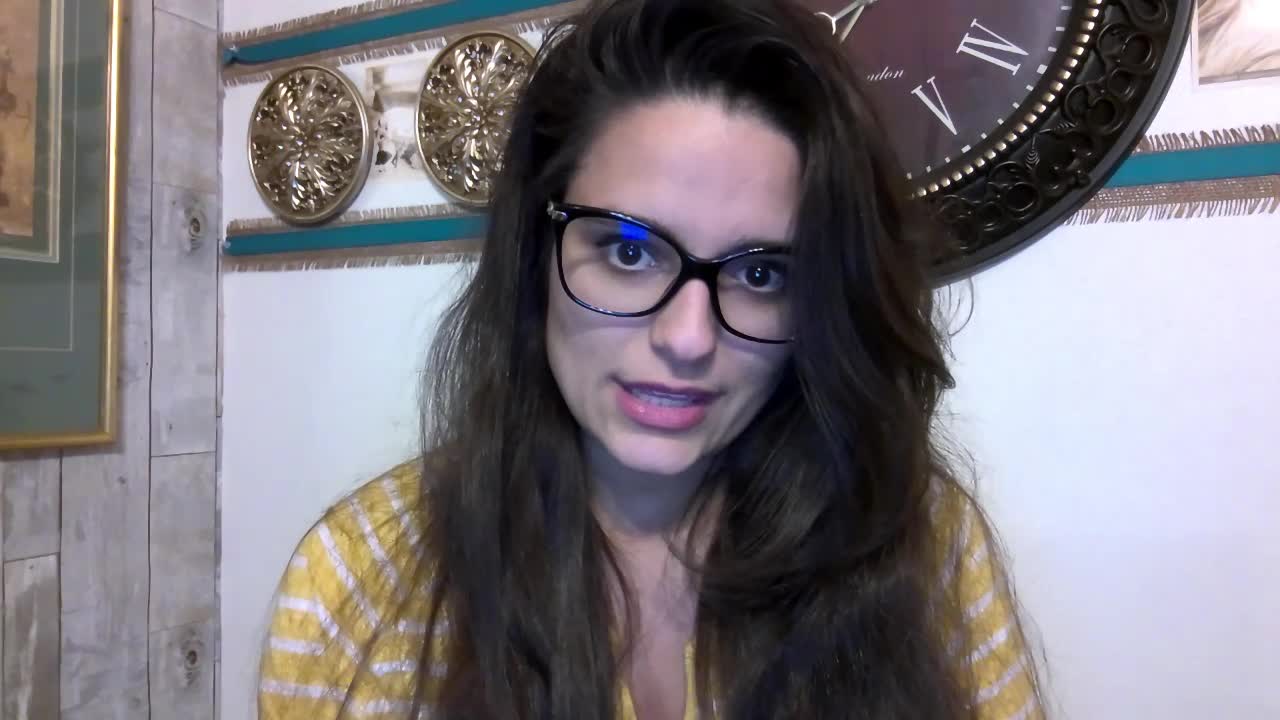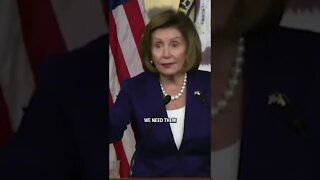Premium Only Content

Deception Analysis: Did Nancy Pelosi Engage in “Insider Trading”?
Recently Nancy Pelosi was asked in an interview if she had ever engaged in insider trading. This is my analysis of that video. I am looking to see if she is telling the truth.
Video Notes:
Video 1) Pelosi Audio and Video Dissection
Recently the Pelosi’s made quite a bit of money in the stock market. Under normal circumstances this would be fine, however the issue that people are having is with how they made that money. The claim is Speaker Pelosi gave her husband insider information that led to their fortune.
During an interview with Speaker Pelosi, the question was asked:
Reporter: “Over the course of your career has your husband ever made a stock purchase or sale based on information he received from you?”
Pelosi: No [loud breath out]. Absolutely not [pitch goes up on the word not]. Ok [pitch is several octaves higher than at the onset] Thank you [pitch remains high than lowers on the word you].”
---- Okay, for this video analysis I am going to use the SCAnS method. This is basically a way of cataloging information that you observe. It roughly works by analyzing what is referred to as channels and the PINs within each channel. Channels could be things like body language, voice, or face. Pins are subcategories of each channel. For example, PINs for voice are volume, tone and pitch. This is a technique I learned from the Emotional Intelligence Academy. Thank you E.I.A., while they gave me the tools and knowledge, it is important to note that this is my analysis and does not reflect the opinions or beliefs of E.I.A..
I am responsible for everything I say and analyses here. This analysis is my perception of Pelosi, and mine alone. Finally note, these observations are made from looking at one sample of data. They have potential for being wrong due to a lack of, inaccurate or misjudging the data available----
Analysis:
Interactional style, what is it? It is how we communicate. The words we use, the sounds we make, the utterances, things like that.
Interactional Style (PINs:
Flow [the Disfluency, the whole thing seems uncomfortable and rushed. Avoiding Contractions, “absolutely not” rather than I didn’t]
Evasiveness [avoiding direct denial personally, saying “absolutely not” rather than I didn’t]
The next channel observed was the voice channel. Voice encompasses things like volume, pitch and tone. All of which I noted here.
Voice ( PINs:
Volume [drop when saying “no”. Could be because of a different PIN. It also sounds like the volume rather, the intensity at which she is pushing out sound from her chest increases when she says “thank you”, this could be because of an increase of a felt emotion. Like anger maybe]
Pitch [there is a sudden raise when saying “Ok” and is still high when saying “thank you”]
Tone [Pelosi’s “no” is very breathy, her “thank you” sounds pushed. The breathy “no” is interesting because it has no base. No confidence. If you are being accused of something that you are innocent of, especially if you are a leader of the USA being accused of something so serious, you’re not going to be pathetic and timid, you’ll be firm and confident. You’ll say, NO, I didn’t do that, instead of that weird half laughing avoidances, zero confidence thing she did] Now she could make the argument that it was so ridiculous that she found such a question light, easy and comedic even. But, I say it’s odd.
The next area I want to analyze is her face.
Face (PINs:
Lips [tightly closes her lips after “absolutely not” and “OK”]
Head [almost does a half circle when she says “no”. This is significant because it is a possible slip in behaviour. When you say yes, you nod, when you say no, you shake your head. So, what does a circle mean? I would say it kind of backs up what we observed in the voice section. There is little confidence in her “No”. Her body is, in essence, publicly disagreeing with her words.]
Eyes [turn down, do not make contact, and stop blink rate. After the question is posed, she looks down, which is change in behaviour because she was making eye contact. She looks everywhere else and her blinking changes. Where she blinked a bit, she now doesn’t blink at all]
Forehead [seems like there may be a crease to start, goes away when she says “no” and returns for the remainder of her time at the podium. With this one I would say a few things. First, the video is really grainy. It is hard to see. It may be nothing. But especially with facial expressions, I like to try and get the expression on my own face. Because, a little psychology trick, when you force a facial expression, your brain will remember the last time you felt that and bring up emotions that lead to the organic expression. Thus, when I put all the possible expressions of my own face to see what emotion makes that same crease on my forehead, I get possible fear.]
Mouth [fully closes after “absolutely not” and “ok”. She starts with her mouth and jaw open, then closes teeth, then closes her lips. Think for yourself, when you remember doing this, maybe your husband or your wife, brother, sister, friend, boss, or someone said something stupid and you were just like mmmmm. You were stopping yourself from speaking. This is a thing. You close your moth when you don’t want to talk. You tighten it closed when you’re feeling that “don’t talk feeling” more intensely. My guess is that she doesn’t want to say something]
Body (PINs:
Possible Gestural Slip [when half circling the head at “no”. Again body saying what the mouth is not.]
Proactive Tension [pushing the mic away after “absolutely not”. This is something you do as an offensive strategy. She is actively pushing away the object that projects her words.]
Reactive Tension [she pushes away from the stand at “no”, steps away at “absolutely not”, and then walks away while pushing away the mic. Reactive tension is the opposite of proactive tension. Instead of trying to “fight” that which she wants to avoid, she “runs” from it. It is a defensive action. In this case she legitimately “runs” off the stage.]
Eyes [Again turned down, blink rate changes. She avoided the questioner. ]
Psychophysiology (PINs:
Respiration [ Sudden exhale of breath when saying “no”. You always want to pay attention to breath rate. A sudden increase or decrease means something potentially. In this case the question made her lose her breath. Why?]
Opinion:
I thought that this was a really fun one to go over, which is why I did. It is a great example of how you can analyze behaviour scientifically. These are actually studied tactics and behaviours, so it goes beyond seeing the idea and thinking, “oh that was weird, but I don’t know why”. Hopefully, now you might have a bit more to tell you why. Note: I’m sure I missed some things, but I was not trying to get everything.
If I had to make a decision, based off of that video, about Speaker Pelosi’s response, I would say she is being less than totally honest. I think she is probably lying. I observed several interesting points, across five of the six channels, in less than seven seconds. At the very least, I would say she needs to be questioned further in this area.
-Have a good day.
-
 0:18
0:18
Townhall
2 years agoWhat did Nancy Pelosi say about immigrants?
41 -
 40:46
40:46
Breitbart
2 years agoLIVE: Nancy Pelosi delivering remarks...
3963 -
 LIVE
LIVE
Steven Crowder
3 hours ago🔴Is America First Dead?
23,160 watching -
 59:23
59:23
VINCE
4 hours agoThis Could Be The Beginning Of The End | Episode 96 - 08/05/25
190K217 -
 LIVE
LIVE
Flyover Conservatives
11 hours agoU.S. Faces Net-Negative Migration for First Time in 50 Years + RFK Jr.’s Vaccine Shakeup | FOC Show
288 watching -
 LIVE
LIVE
The Mel K Show
1 hour agoMORNINGS WITH MEL K - The Democratic Socialists vs The Constitutional Republic: History Tells the Story 8-5-25
776 watching -
 LIVE
LIVE
The Shannon Joy Show
2 hours ago🔥🔥Trump Thinks Sidney Sweeney Is Hot, Criticism Of Israel Is NOT. Plus The Rise Techno Fascism With Special Guest Aaron Day🔥🔥
207 watching -
 LIVE
LIVE
Grant Stinchfield
48 minutes agoAmerican Health Scandals Busted by Stinchfield, Dr. Thorp & RFK Jr.
223 watching -
 LIVE
LIVE
Trumpet Daily
1 hour agoTrumpet Daily LIVE | Aug. 5, 2025
508 watching -
 2:02:36
2:02:36
Badlands Media
2 hours agoBadlands Daily: August 5, 2025
41.4K14